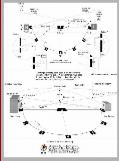The Shooting Academy - SKEET Field Layout. Skeet shooting is an easy game guaranteed to improve your basic shooting skills. You will see great results and are guaranteed to save money compared to shooting sporting clays. International Skeet shooting is a faster game than US Skeet shooting. US Skeet shooting is controlled by the NSSA - The National Skeet Shooting Association. Skeet shooters love shooting skeet and the game has proven to encourage new skeet shooters, to this safe, guaranteed easy method to improve your results.
The Shooting Academy has skeet field designs and skeet layout plans and skeet house building plans and technical drawings for designing a skeet shooting range or skeet filed layout you'll love to get your easy, proven guaranteed results..
We have Skeet rules and International Skeet rules.
Skeet was invented by Charles Davies, an avid grouse hunter, in the 1920s as a sport called Clock Shooting. The original course was a circle, of radius 25 yards, with its circumference marked off like the face of a clock and a trap set at the 12 o'clock position. The practice of shooting from all directions had to cease, however, when a chicken farm started next door plus it was extremely dangerous for shooters waiting or approaching the field.
For the American version of the game, the clay discs are 4 and 5/16 inches in diameter, one and 1/8 inches thick, and fly a distance of 60 yards (+/- 2 yards). The international version of skeet uses a target that is slightly larger in diameter (110mm), shorter in cross section (25mm vs. 1 1/8 inches), and has a thicker dome center, making it harder to break. International targets are also thrown a longer distance from similar heights (over 70 yards), resulting in a faster target speed.
The firearm of choice for this task is usually a high quality, double-barreled over and under shotgun with 25/26inch barrels. Some gun shops refer to this type of shotgun as a skeet gun, a sporter gun or a trap gun although many shooters of American skeet and other national versions still use inexpensive semi-auto and pump action shot guns with great success. The use of clay targets replaced the more traditional target of live birds, as a cheaper, more humane and more reliable alternative, one reason they're called clay pigeons.
The event is in part meant to simulate the action of bird hunting. The shooter shoots from 7 positions on a semi-circle with a radius of 21 yards (19 m), and an 8th position halfway between stations 1 and 7. There are two houses that hold devices known as "traps" that launch the targets, one at each corner of the semi-circle. The traps launch the targets to a point 15 feet above ground and 18 feet outside of station 8. One trap launches targets from 10 feet above the ground ("high" house) and the other launches it from 3 feet above ground ("low" house). At stations 1 and 2 the shooter shoots at single targets launched from the high house and then the low house, then shoots a double where the two targets are launched simultaneously. At stations 3, 4, and 5 the shooter shoots at single targets launched from the high house and then the low house. At stations 6 and 7 the shooter shoots at single targets launched from the high house and then the low house, then shoots a double. At station 8 the shooter shoots one high target and one low target. The shooter must re-shoot his first missed target, or if no targets are missed, must shoot his 25th shell at the low house station 8. This 25th shot was once referred to as the shooter's option as he was able to take it where he preferred. Now, to speed up rounds in competition, the shooter must shoot the low 8 twice for a perfect score.
The game evolved to its current setup by 1923 when one of the shooters, William Harnden Foster, solved the problem by placing a second trap at the 6 o'clock position and cutting the course in half. Foster quickly noticed the appeal of this kind of competition shooting, and set out to make it a national sport. The game was introduced in the February 1926 issue of National Sportsman and Hunting and Fishing magazines and a prize of 100 dollars was offered to anyone who could come up with a name for the new sport. The winning entry was "skeet" chosen by Gertrude Hurlbutt. The word "skeet" is derived from the Scandinavian word for "shoot". During World War II, Skeet was used in the American military to teach gunners the principle of leading and timing on flying target.
Skeet is a recreational and competitive activity where participants attempt to break clay disks flung into the air at high speed from a variety of angles.
